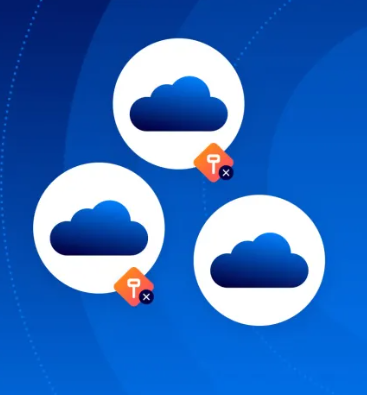
In the world of modern business technology, Virtual Desktops (or Cloud Desktops) are becoming increasingly popular. But what exactly is a virtual desktop, and why should you consider using one? Let’s dive into the concept and explore the key advantages it brings to the table.
What is a Virtual Desktop?
A Virtual Desktop is essentially a virtual machine that can be accessed remotely via any browser. Instead of relying on traditional personal computers with local hardware, users can connect their keyboard, screen, and mouse to a remote desktop hosted in the cloud. This setup allows users to access all of their data, software, and applications from anywhere at any time, as long as they have an internet connection.
Why Should You Use a Virtual Desktop?
The main advantage of virtual desktops is that they offer a flexible, secure, and cost-effective alternative to traditional desktop setups. Virtual desktops centralize the management of data and applications, ensuring that your systems are protected and scalable. The technology offers several benefits, making it a valuable solution for businesses of all sizes.
Key Benefits of Virtual Desktops
1. Mobility and Remote Access
One of the standout features of Virtual Desktops is the ability to access your workstation from virtually anywhere. Whether you’re at home, traveling for business, or working remotely, you can access your files and applications on any device with an internet connection. This flexibility improves productivity and ensures that you can work from wherever you are, whenever you need.
2. Enhanced Security
Security is a major concern for many businesses, and Virtual Desktops address this by providing robust protection for your data. Since all your data is stored in secure data centers rather than on individual devices, the risk of losing sensitive information is significantly reduced. In the event that a device is lost or damaged, restoring the data is easy, and it can be quickly recovered from the server. Additionally, regular security updates ensure that your workstation remains aligned with the latest security standards.
3. Quick and Easy Workstation Provisioning
Setting up a new workstation for an employee is faster and more efficient with a Virtual Desktop. Once the workstation is configured, it can be easily replicated and assigned to new users. This not only speeds up onboarding but also minimizes the risk of errors that may occur during the manual configuration of traditional desktops.
4. Centralized Patch Management
With Virtual Desktops, all updates and patches are managed centrally on the server, rather than on each individual workstation. This makes it easy to apply necessary updates quickly and efficiently, without needing to physically go to each machine. It streamlines the management process and ensures that every user is working with the most up-to-date software.
5. Optimized Work Environment
Virtual Desktops offer the ability to optimize work environments, especially for temporary projects or short-term staffing needs. The easy setup and management ensure that businesses can quickly scale their workforce without worrying about the complexities of traditional desktop configurations.
6. Simplified Issue Resolution
Another key advantage of Virtual Desktops is the ease of system management. Any issues that arise can be resolved directly in the data center, rather than needing to fix problems on individual workstations. This centralized approach allows IT teams to address and fix issues more quickly, minimizing downtime and disruption.
Conclusion
Virtual Desktops provide businesses with an array of benefits, from enhanced mobility and security to simplified management and cost savings. Whether you are a small business or a large enterprise, transitioning to a Virtual Desktop solution can streamline your operations, protect your data, and enable your team to work more efficiently from anywhere in the world.












